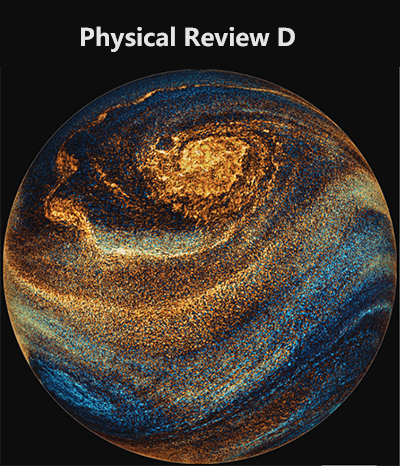Parkes Pulsar Timing Array constraints on ultralight scalar-field dark matter
IF 4.6
2区 物理与天体物理
Q1 ASTRONOMY & ASTROPHYSICS
引用次数: 63
Abstract
It is widely accepted that dark matter contributes about a quarter of the critical mass-energy density in our Universe. The nature of dark matter is currently unknown, with the mass of possible constituents spanning nearly one hundred orders of magnitude. The ultralight scalar field dark matter, consisting of extremely light bosons with m ∼ 10^(−22) eV and often called “fuzzy” dark matter, provides intriguing solutions to some challenges at sub-Galactic scales for the standard cold dark matter model. As shown by Khmelnitsky and Rubakov, such a scalar field in the Galaxy would produce an oscillating gravitational potential with nanohertz frequencies, resulting in periodic variations in the times of arrival of radio pulses from pulsars. The Parkes Pulsar Timing Array (PPTA) has been monitoring 20 millisecond pulsars at two- to three-week intervals for more than a decade. In addition to the detection of nanohertz gravitational waves, PPTA offers the opportunity for direct searches for fuzzy dark matter in an astrophysically feasible range of masses. We analyze the latest PPTA data set which includes timing observations for 26 pulsars made between 2004 and 2016. We perform a search in this data set for evidence of ultralight dark matter in the Galaxy using Bayesian and Frequentist methods. No statistically significant detection has been made. We, therefore, place upper limits on the local dark matter density. Our limits, improving on previous searches by a factor of 2 to 5, constrain the dark matter density of ultralight bosons with m ≤ 10^(−23) eV to be below 6 GeV cm^(−3) with 95% confidence in the Earth neighborhood. Finally, we discuss the prospect of probing the astrophysically favored mass range m ≳ 10^(−22) eV with next-generation pulsar timing facilities.Parkes脉冲星定时阵列对超轻标量场暗物质的约束
人们普遍认为暗物质贡献了宇宙临界质量能量密度的四分之一。暗物质的性质目前尚不清楚,其可能组成部分的质量跨越了近100个数量级。超轻标量场暗物质由m ~ 10^(−22)eV的极轻玻色子组成,通常被称为“模糊”暗物质,为标准冷暗物质模型在亚星系尺度上的一些挑战提供了有趣的解决方案。正如Khmelnitsky和Rubakov所表明的那样,银河系中的标量场将产生以纳赫兹频率振荡的引力势,从而导致脉冲星射电脉冲到达时间的周期性变化。十多年来,帕克斯脉冲星定时阵列(PPTA)一直在以两到三周的间隔监测20颗毫秒脉冲星。除了探测纳赫兹引力波之外,PPTA还提供了在天体物理可行的质量范围内直接搜索模糊暗物质的机会。我们分析了最新的PPTA数据集,其中包括2004年至2016年间对26颗脉冲星的定时观测。我们使用贝叶斯和频率主义者的方法在这个数据集中搜索银河系中超轻暗物质的证据。没有统计学上显著的发现。因此,我们设定了局部暗物质密度的上限。我们的限制,在先前搜索的基础上提高了2到5倍,限制了m≤10^(−23)eV的超轻玻色子的暗物质密度在地球附近以95%的置信度低于6 GeV cm^(−3)。最后,我们讨论了用下一代脉冲星计时设备探测天体物理上有利的质量范围m > 10^(−22)eV的前景。
本文章由计算机程序翻译,如有差异,请以英文原文为准。
求助全文
约1分钟内获得全文
求助全文
来源期刊

Physical Review D
ASTRONOMY & ASTROPHYSICSPHYSICS, PARTICLES-PHYSICS, PARTICLES & FIELDS
CiteScore
9.30
自引率
36.00%
发文量
3456
期刊介绍:
Physical Review D (PRD) is a leading journal in elementary particle physics, field theory, gravitation, and cosmology and is one of the top-cited journals in high-energy physics.
PRD covers experimental and theoretical results in all aspects of particle physics, field theory, gravitation and cosmology, including:
Particle physics experiments,
Electroweak interactions,
Strong interactions,
Lattice field theories, lattice QCD,
Beyond the standard model physics,
Phenomenological aspects of field theory, general methods,
Gravity, cosmology, cosmic rays,
Astrophysics and astroparticle physics,
General relativity,
Formal aspects of field theory, field theory in curved space,
String theory, quantum gravity, gauge/gravity duality.
 求助内容:
求助内容: 应助结果提醒方式:
应助结果提醒方式:


